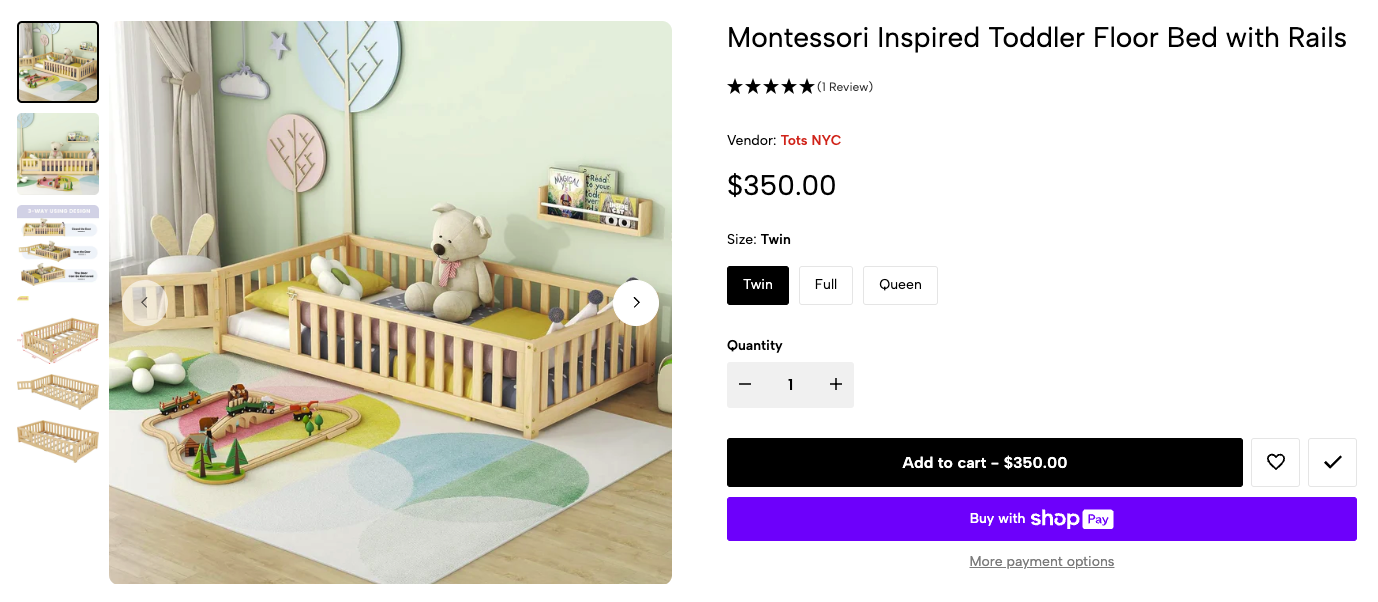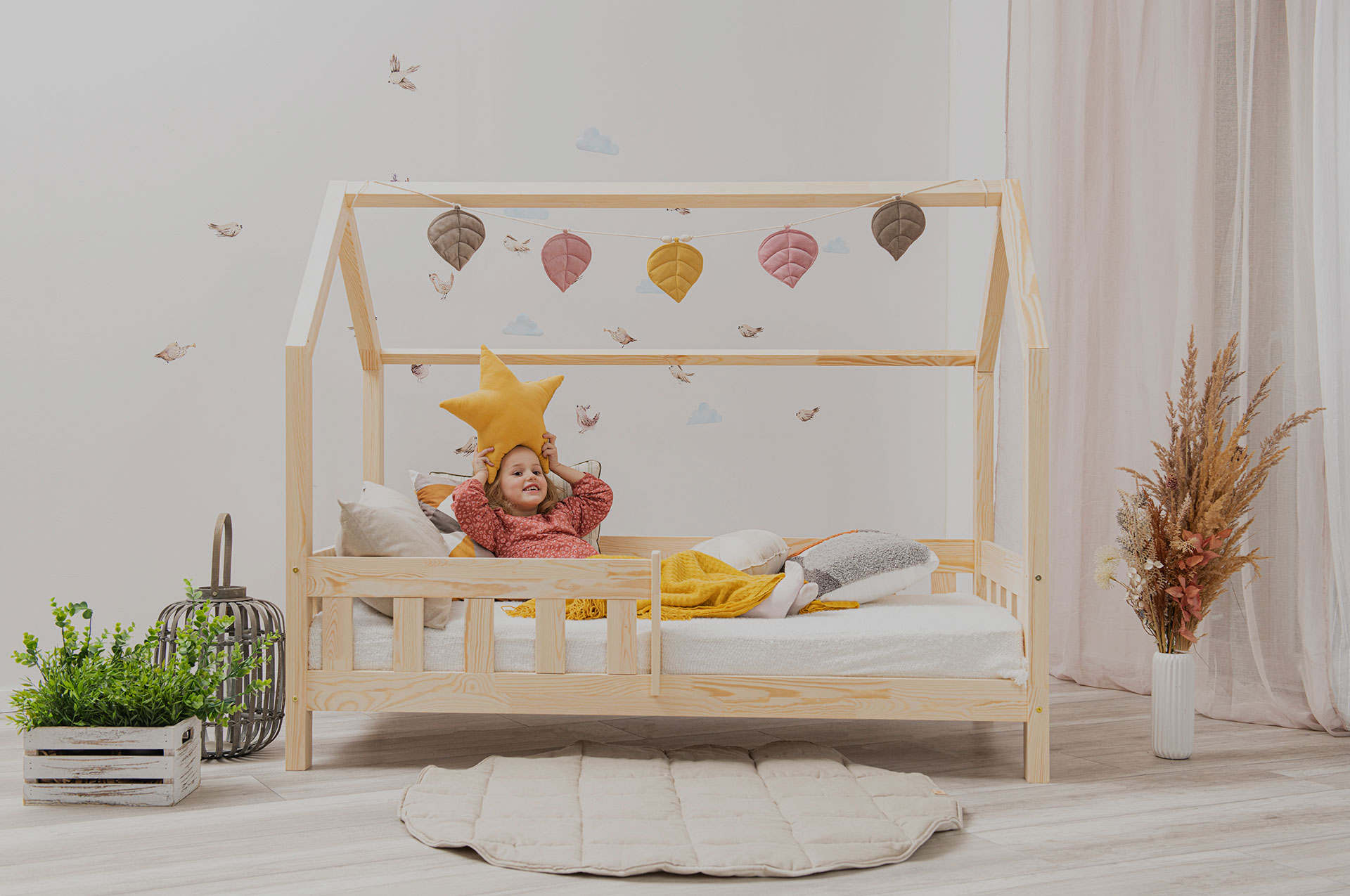A Guide for Canadian Parents
Hello, fellow parents! If you’re here, it means you’re curious about how to create a Montessori bedroom for your little one. As a mom who’s been down this road, I can assure you it’s a fantastic journey that brings out the best in both you and your child. Let’s dive in!
Understanding the Montessori Philosophy
Before we jump into the nitty-gritty of setting up the perfect Montessori bed, let’s chat a bit about what Montessori is all about. The Montessori method, developed by Dr. Maria Montessori, emphasizes independence, freedom within limits, and respect for a child’s natural psychological development. It’s all about creating an environment that fosters learning and growth in a self-directed manner.
Why a Montessori Bedroom?
A Montessori bedroom is designed to be a child-friendly space that encourages independence and exploration. The idea is to create an environment where your child can move freely, make choices, and learn at their own pace. Here in Canada Montessori community, with our long winters and varying weather, having an indoor space that promotes active learning is a real blessing.

Step 1: Choosing the Right Furniture
Low Bed: Start with a low bed or a floor bed. This is a cornerstone of the Montessori bedroom. A low bed allows your child to get in and out of bed independently. It promotes a sense of freedom and self-reliance. You can find some beautiful, Canadian-made low beds from local stores or even try a DIY project if you’re handy!
Child-Sized Furniture: Invest in child-sized furniture such as a small table and chairs. This enables your child to sit comfortably and engage in activities like drawing or playing without needing help. Canadian brands often offer eco-friendly, sturdy options that can last through their growing years.
Accessible Storage: Use low shelves and storage units where your child can easily access their toys, books, and clothes. The idea is to have everything within their reach, so they don’t have to ask for help all the time. Baskets and bins are great for organizing toys and keeping things tidy.
Step 2: Creating a Safe and Stimulating Environment
Safety First: Ensure that the room is safe for your child to explore. Secure heavy furniture to the walls, cover electrical outlets, and remove any small items that could be choking hazards. Safety is paramount, and it allows your child to explore freely without constant supervision.
Natural Materials: Choose natural, non-toxic materials for the room. Wooden toys, cotton bedding, and organic fabrics are great options. Not only are they safer for your child, but they also have a warm, inviting feel that plastic just can’t match.
Calming Colors: Opt for a soothing color palette. Soft pastels and neutral tones create a calm environment that’s conducive to rest and relaxation. Bright, primary colors can be stimulating, but too much can be overwhelming.
Step 3: Organizing and Decluttering
Less is More: Keep the room simple and clutter-free. A Montessori bedroom shouldn’t be overflowing with toys and distractions. Instead, rotate toys to keep things fresh and engaging. A few carefully chosen items that your child loves and learns from are better than a roomful of distractions.
Accessible Wardrobe: Set up a low wardrobe or clothes rack where your child can choose their own clothes. This promotes independence and helps them learn to dress themselves. Involving them in the process, like picking out clothes for the next day, can be a fun and educational activity.
Step 4: Incorporating Learning and Play
Montessori Toys: Provide a selection of Montessori toys that encourage exploration and learning. Wooden blocks, puzzles, and sensory toys are excellent choices. These toys are designed to help with fine motor skills, problem-solving, and creativity.
Reading Nook: Create a cozy reading nook with a small bookshelf and a comfy chair or floor cushion. Encourage a love for reading by having a variety of age-appropriate books available. Make it a routine to spend time reading together, fostering a bond and a love for stories.
Art and Creativity: Set up an art station with crayons, paper, and other craft supplies. Let your child’s creativity flow freely. This area doesn’t need to be elaborate; even a small table with some basic supplies can do wonders for their imagination.
Step 5: Encouraging Independence
Routine and Order: Establish a daily routine and involve your child in simple tasks. Whether it’s making the bed, putting away toys, or helping with meal prep, these activities teach responsibility and self-discipline.
Personal Touches: Allow your child to have a say in their room’s decor. Let them choose colors, artwork, or even small pieces of furniture. This gives them a sense of ownership and pride in their space.
Freedom Within Limits: While independence is key, it’s also important to set boundaries. Explain what is and isn’t allowed in their room and why. This helps them understand limits and develop self-control.
Step 6: Keeping It Fresh
Rotate Toys and Activities: To keep things interesting, rotate the toys and activities every few weeks. This doesn’t mean you need to buy new toys constantly; simply switch out the ones you already have. This keeps the room dynamic and engaging.
Observe and Adapt: Pay attention to how your child uses the space and be ready to adapt. If something isn’t working or if they’ve outgrown certain activities, make changes. The goal is to create a space that grows with your child.
Embracing the Journey
Creating a Montessori bedroom is a journey, not a destination. It’s about observing, adapting, and creating a space that nurtures your child’s growth and independence. Remember, every child is unique, and what works for one may not work for another. Be patient and flexible, and enjoy the process of creating a beautiful, functional space for your little one.
In Canada, we’re blessed with diverse resources and a community that values sustainable, thoughtful living. Tap into local artisans, eco-friendly brands, and fellow parents for inspiration and support.
In conclusion, a Montessori bedroom is a wonderful way to foster independence, creativity, and a love for learning in your child. By choosing the right furniture, creating a safe and stimulating environment, organizing thoughtfully, and encouraging independence, you’re setting the stage for your child’s development and growth. So, roll up your sleeves, get creative, and have fun transforming your child’s room into a Montessori haven!


